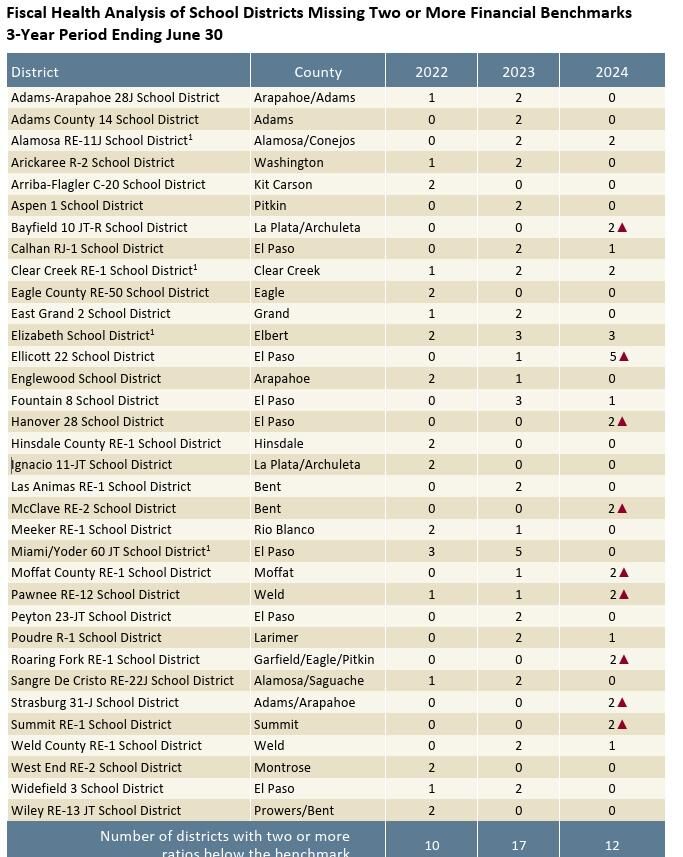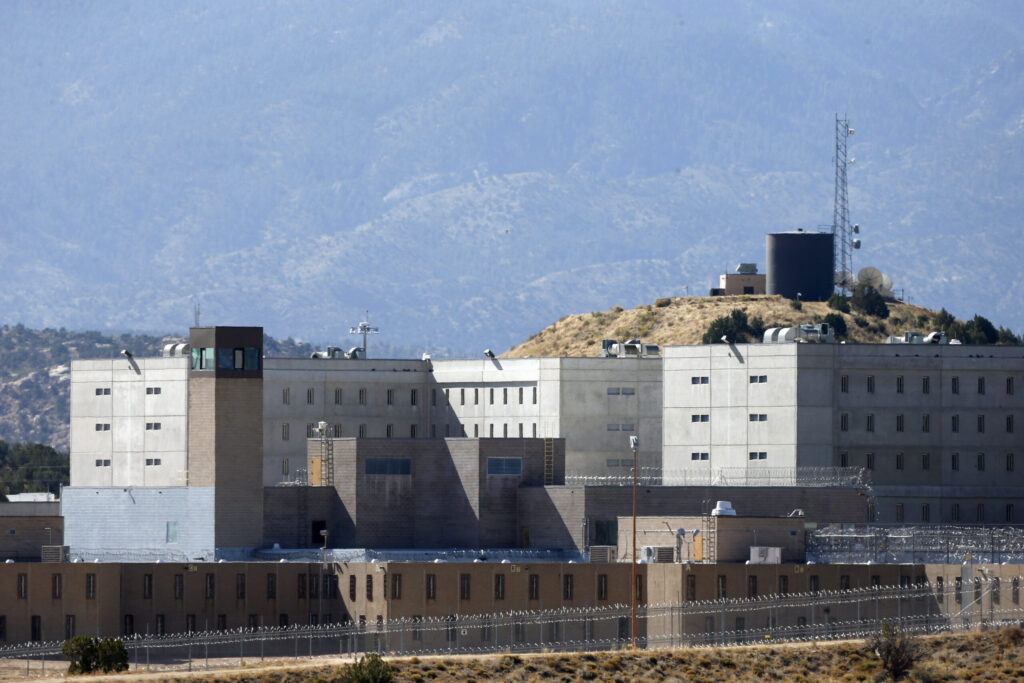Financial challenges mount for 16 Colorado school districts, audit reveals

Sixteen school districts in Colorado, almost all of them rural, are showing signs of financial stress, according to an audit released on the fiscal health of the state’s 178 public school districts.
Eighteen other districts, however, are moving off the list with improvements to their fiscal health in the 2023-24 fiscal year.
The Ellicott School District, east of Colorado Springs, was under the bullseye Monday, with five missed benchmarks in 2023-24, up from one in 2022-23. The district had no missed benchmarks just two years earlier.

Of the 16 school districts that missed financial benchmarks, four were in rural El Paso County.
The annual fiscal health report covered three years, from fiscal year 2021-2022 through 2023-24. It examined debt and general fund reserve balances, using six ratios to determine a school district’s financial health.
Those ratios look at whether a district can pay its bills in the short term, known as the asset sufficiency ratio; at its debt burden; the operating reserve, which shows the district’s ability to cover future expenses; its operating margin; and deficit fund balance.
Jennifer Okes, the district operations special advisor for the Department of Education, told the Legislative Audit Committee that the state’s 178 school districts serve 881,000 students.
School districts are funded through two sources: local property taxes and state dollars provided by the Colorado General Assembly. In 2024, 11 school districts were funded entirely by local property taxes. That’s up from four in the previous fiscal year.

The benchmarks missing most often were on operating margin and changes in fund balance. Districts with operating margin issues mean they have more expenditures than revenue. The fund balance ratio indicates that a district’s general fund balance has declined over time.
Okes noted that, even with the end of the budget stabilization factor – the state paid it off for the first time in the 2024-25 fiscal year – school districts are still facing budgetary challenges.
It’s not just teacher shortages, Okes said. It now includes shortages on the operational side, such as business, financial, nutrition, and transportation staff, particularly in rural districts.
Building maintenance, increased costs for student support, and health insurance are also driving those challenges, she explained.
Missing a benchmark doesn’t necessarily mean a district is facing financial stress, according to auditor Lynn Obremski, but “it does warrant examination” by the district to see what caused it. That, in turn, allows the district to take quicker action to avoid financial decline that could lead to reducing or eliminating programs that hurt the quality of education.
Of the 17 districts that missed two or more in 2022-23, several improved, such as the Miami/Yoder district in El Paso County, which went from missing five to zero.
Those that missed the fund balance benchmark were using those balances to pay for retraining staff, including salaries and benefits, building maintenance, and overall inflation.
A dozen districts with two or more missed benchmarks were required to report on why there was a decline in their fiscal health. Obremski said those districts are correcting the problems with stronger financial controls, reductions in administrative costs and new systems to track expenses accurately.
Of all the districts with missed benchmarks, Ellicott School District in El Paso County showed the most significant problems.
Superintendent Chris Smith explained that the most significant factor was the increased costs of a construction project to add 13 more classrooms at the elementary and high schools.
“We’re a bedroom community of Colorado Springs,” Smith said.
Five years ago, new housing developments were going in just 2 miles within the district, “with fanfare and just blazing about how the people were coming,” Smith said.
The district had to prepare, with just three schools that serve about 1,000 students. Another 200 to 400 students would have the buildings bursting at the seams, Smith said.
The school board started looking at solutions without having to build a whole new school site, which would have a projected cost of $40 million.
The district decided to go with steel buildings and a certificate of participation, a type of bond, for $5.8 million.
“The one error that I made was not standing up to the Board of Education at the time,” Smith said, adding the district went ahead with the construction project.
But the growth didn’t materialize.
Smith said the district now has 13 “beautiful” classrooms that can accommodate up to 150 students at the elementary and high school buildings.
Smith said he has also struggled with staffing issues related to business management, indicating he has had to train new business staff, which isn’t in his wheelhouse. The district has hired an accounting team to get it back on track, Smith told the committee.
In response to a question from Sen. Rod Pelton, R-Cheyenne Wells, on why the growth didn’t happen, Smith pointed to people moving into the community who didn’t have school-age children and noted it’s expensive to live in Ellicott. There’s also competition from charter schools and online schools, Smith noted.
Echoing factors noted by other superintendents, Smith added it’s hard to attract staff, teachers and bus drivers, and noted those who go to work in Colorado Springs school districts, just 12 miles west, earn about $10 an hour more.












